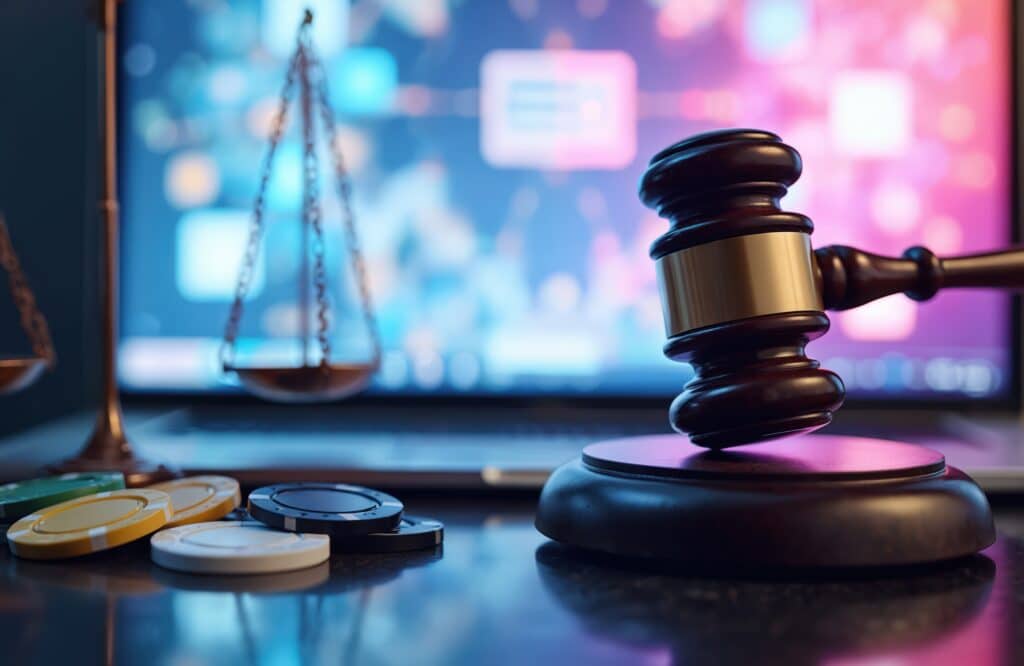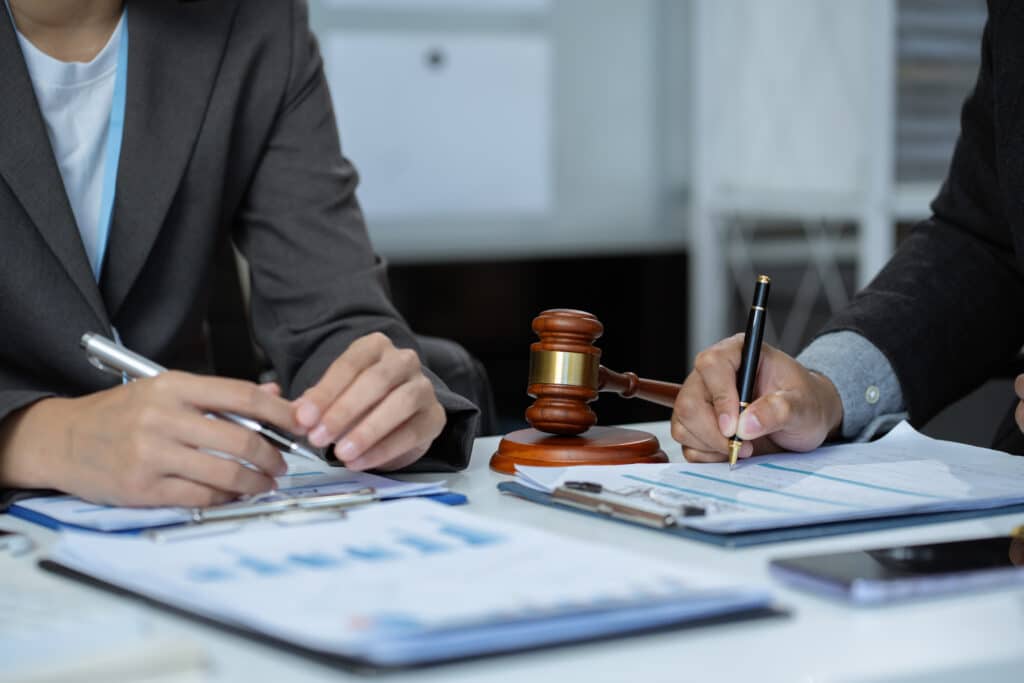Legal Insights into AI-Driven Game Development
The integration of artificial intelligence (AI) into game development has opened up new possibilities and efficiencies, but it also brings significant legal challenges. Two primary issues stand out: the risk of copyright infringement and the difficulty in obtaining copyright protection for AI-generated content.
Copyright Infringement Risks
The risk of copyright infringement stems from a concern that some AI models have been trained using copyrighted material, for example, by scraping material from the internet. The fact that something is available on the internet does not necessarily mean it is not copyright-protected or that it can be used freely.
These concerns have materialized into several class-action lawsuits, mainly against Microsoft and OpenAI, where the companies are being accused of using copyright-protected works to train AI without permission. The cases are taking place in the US and one in the UK (Getty Images v. Stability AI) and are all ongoing. Only time will tell whether the courts consider the use of these works as copyright infringement or deem the use as fair use under the fair use doctrine, which is the main argument in Microsoft’s and OpenAI’s defense. This defense was successfully used by Google against Oracle when roughly 10,000 lines of Java APIs code were used to develop the Android platform without Oracle’s permission. In April 2021, the Supreme Court ruled in favor of Google that Google’s use of the Java APIs constituted a transformative fair use. It is interesting that if there were a similar lawsuit in Europe, the same defense could not be used as there is no equivalent fair use doctrine in Europe.
One of the ongoing class-action cases also raises a more prevalent form of risk of copyright infringement for game developers. A group of award-winning visual artists is claiming that the AI models of Stability AI Ltd., Stability AI Inc., Midjourney Inc., and DeviantArt Inc. not only used their works to train the companies’ AI models but also that the AI models generate reconstructed copies of their works without permission. In general, if an AI model has been trained using copyrighted material, there is a risk that its output may reflect those works, and the AI model may generate reconstructed copies of an existing work, potentially leading to copyright infringement if used in a game. The pitfall here is that it is easy to assume that when you create something using AI, you automatically own the rights to it.
Copyright Protection Challenges
Difficulty in obtaining copyright protection for AI-generated content is another significant issue for game developers. Copyright laws differ slightly depending on the jurisdiction. However, generally, copyright laws state that copyright is created automatically for a natural person who has created a literary or artistic work. From this, it can already be concluded that the AI itself cannot get the copyright. This has also been tested in court in the U.S. in the Thaler v. Perlmutter case, where the plaintiff sought to register the work for a copyright, listing the computer system as the author and explaining that the copyright should transfer to him as the owner of the machine. The Copyright Office denied the application on the grounds that the work lacked human authorship.
Which Works Are Eligible for Copyright Protection?
To be eligible for copyright protection, the created work must exceed the threshold of originality. The term “original” consists of two components: the work has to be an independent creation, and sufficient creativity needs to be used when creating the work. In other words, the work must be created by the author without copying someone else’s work, and it should be the result of the creator’s own effort and imagination, meaning that the work must be original enough that no one else would have arrived at the same result.
Does the AI Tool Used Matter?
Some AI tools, for example, Midjourney in the case Zarya of the Dawn, have been seen by the U.S. Copyright Office to function too randomly and automatically, without sufficient creative input or intervention from a human author. This lack of human authorship led to the conclusion that the AI-generated content was not eligible for copyright protection in this case, where an author tried to register the copyright for a comic book, Zarya of the Dawn. The author was granted copyright to everything else except the images generated by Midjourney. The author also tried to edit some of the images, but the edits were too minor to supply the necessary creativity for copyright protection. Also, the edits were too minor to be separate works.
In China, the threshold for originality, which a work must meet to be eligible for copyright protection, seems to be lower than in the U.S. and Europe. In the case of Li vs. Liu, the Beijing Internet Court ruled that an image generated by the plaintiff using the AI tool Stable Diffusion was eligible for copyright protection. The key reason for this decision was that the plaintiff was able to demonstrate that they could accurately direct the AI.
Current Legal Consensus: NO copyright protection for AI-Generated Works
Despite this ruling in China, the current legal consensus, especially in the U.S. and Europe, is that AI-generated works are generally not eligible for copyright protection due to the lack of human authorship.
However, the U.S. Copyright Office’s registration guidance suggests that it may be possible to register copyright for AI-generated content on a case-by-case basis, depending on specific circumstances, particularly how the AI tool operates and how it was used to create the final work. The key consideration is whether the care the result of “mechanical reproduction” (i.e., automated processes) or whether they reflect the author’s original mental conception, which is then given visible form through the AI.
Future
It is clear that we are approaching new frontiers in copyright law as artists increasingly incorporate AI into their creative processes to generate new artistic works. The purpose of copyright and patent laws is to incentivize individuals to create and invent. In order to maintain this, laws and regulations will need to evolve to address how to best incentivize creativity involving AI while also safeguarding original works from infringement. It is clear that more laws, regulations, case law and guidance will emerge to clarify when AI-generated works can be eligible for copyright protection, but this will probably take a few years. Until then, the legal challenges must be addressed by applying existing regulations and practices.
Practical Tips for Game Developers
If you are a game developer using AI in your game development processes or planning to do so in the future, consider the following tips to help reduce these risks:
- Select AI Tools Carefully: Prefer AI tools that allow the user maximum control over the output. This can help mitigate the risks related to copyright ownership.
- Review the Terms of Use for AI Tools: Pay attention to who owns the content produced by the AI.
- Use a Custom AI Model with a Custom Dataset: Train the AI with your own or licensed material. This will mitigate the risks related to copyright infringement and ownership.
- Customize AI Outputs: Instead of using raw outputs from AI tools, use them as a starting point. Enhance, modify, or combine AI-generated assets with original content to create something new and unique.
- Document Human Contributions: Keep detailed records of human contributions throughout the AI generation process. This documentation, for example prompts, can demonstrate the extent of human authorship in the creation of the work.
- Inspect AI-Generated Content: Regularly review content produced by AI for potential issues. This can help ensure that the content does not replicate existing copyrighted works.
- Create an AI Policy: Ensure everyone on your team is aligned regarding the use of AI. A clear policy can help mitigate the risks related to copyright infringement and ownership. These are also increasingly requested in due diligence processes.
- Disclose AI Usage: For example, under Valve’s new rules, developers must disclose when their games contain content created with the help of AI.


